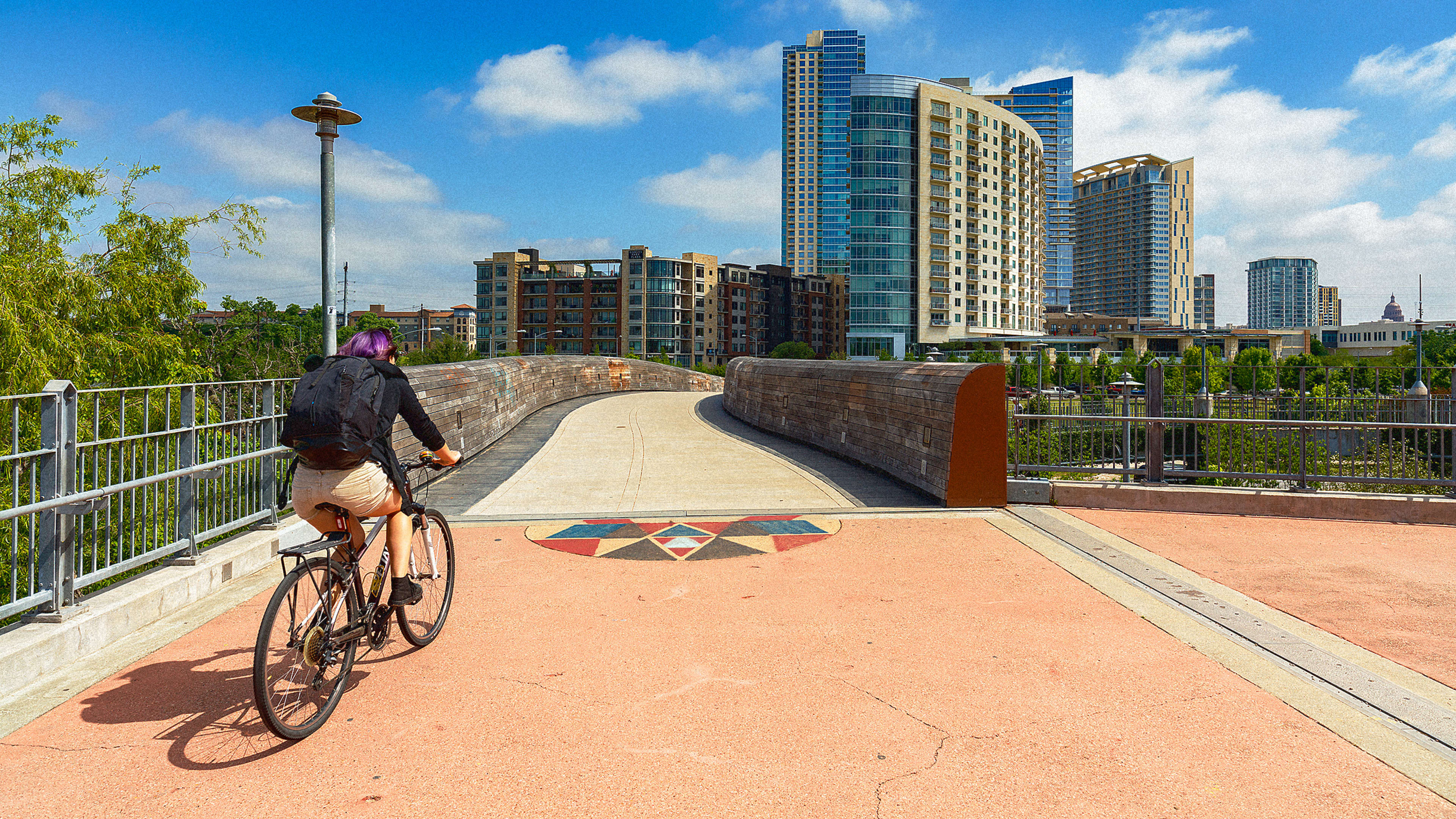Austin, Texas, where drivers spend an average of 104 hours stuck in traffic each year, is a city built around the car. But after passing two new propositions, the city now plans to invest more than $7 billion in a new transit system, and another $460 million in new infrastructure centered on walking and biking.
“There were three main arguments that were made,” says Austin mayor Steve Adler. “One was congestion. One was climate change. One was mobility equity in our city.”
The city’s new transit plan, called Project Connect, will build a new rail system with 31 stations, four new rapid bus routes, new on-demand shuttles to take people to transit stations, and new park-and-ride stations. The plan, funded by an increase in property taxes, also includes $300 million to help make sure that as transportation improves in some neighborhoods and housing values rise, residents aren’t displaced from their homes due to gentrification. They’ll do this by offering rent subsidies, building more affordable housing, and giving financial assistance to home buyers. A second measure will invest millions in new bike lanes, sidewalks, urban trails, intersections that are redesigned for safety, and other infrastructure, including a new pedestrian bridge.
The city had failed to pass two plans for new rail lines in the past. Adler says it succeeded now in part because it was the right plan. “It had gone through several years of real intense public engagement and scrutiny,” he says. “So we went through a campaign where the opposition never really attacked the plan itself. And that was considerably different than the plan in 2014. It was also large enough so that people actually thought it would meaningfully impact traffic and climate change issues.”
The plan will take an estimated 250,000 daily car trips off its streets “by providing people true mobility options which really don’t exist in Austin right now,” Adler says. The majority of affordable housing units in the city will be within walking distance of a proposed station, so it also gives new options to those who don’t own cars.
“It’s going to be a very liberating experience to access more of the city than you could before,” says Adam Greenfield, a community, public space, pedestrian, and bicycle advocate based in Austin, Texas, who doesn’t own a car himself. “Austin is a very car-oriented and car-dependent city. And much of its infrastructure was built during that period when cars, and cars only, were seen as the future of mobility.”
“For several decades now that’s become increasingly obvious to more of the general public, and I think we saw last night’s result as a great sign of that,” Greenfield says. “More and more people, and more and more leaders, are realizing that we actually need transportation choices. And we need to start retooling our infrastructure to reflect that.”
Roughly three-quarters of Austin residents drive alone to work now. By 2039, the city wants to shrink that to 50%, so half of the city’s residents are walking, biking, or taking public transit. It’s a major change. “Texas is certainly a state where people love their cars,” Adler says. But behaviors will shift, he believes, if the right infrastructure is in place. “I think people will change how they commute if you present an alternative that is more convenient, more viable, less expensive, and safer,” he says. “And if you don’t do those things, and then probably it’s not adopted. But this plan provides exactly that.”
Both of the propositions—for public transit and for better walking and biking facilities—had to pass together for the whole system to change, Greenfield says. And they did. “This is a sign that Austin has changed and, by extension, America has changed,” he says. “The public has changed its mind about how it wants to get around.”
Recognize your brand’s excellence by applying to this year’s Brands That Matter Awards before the early-rate deadline, May 3.
